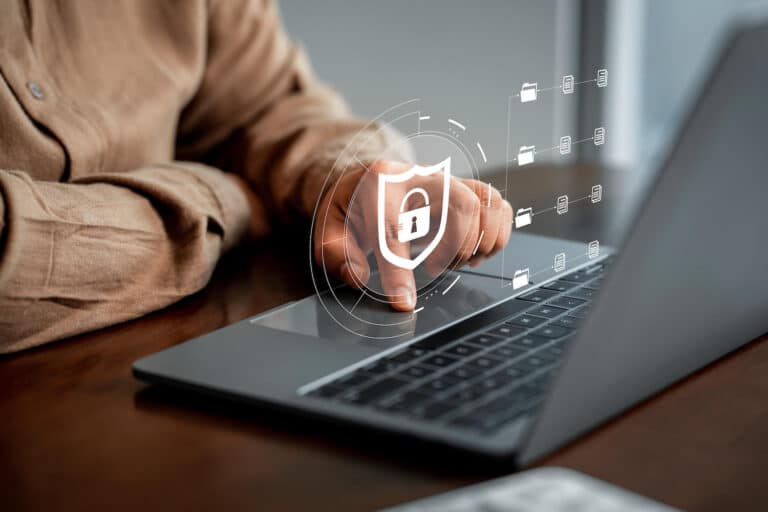In today’s interconnected digital world, the stakes for cybersecurity have never been higher, with data breaches and cyber threats posing significant risks to organizations across industries. As technology advances, so do the tactics of cybercriminals, making robust cybersecurity risk management an essential component of any successful business strategy. Effective management of these risks not only protects sensitive information but also safeguards an organization’s reputation and financial stability. This critical need for comprehensive cybersecurity solutions underscores the critical role of frameworks like the NIST Risk Management Framework in creating structured and resilient defences.
The National Institute of Standards and Technology (NIST) has long been at the forefront of setting industry benchmarks for security standards, offering a systematic approach through its Risk Management Framework (RMF). The RMF guides organizations in developing strategies that effectively address their unique cybersecurity challenges by categorizing information systems, selecting appropriate security controls, and continuously monitoring them against emerging threats. By leveraging this framework, businesses can ensure that their cybersecurity measures are not only compliant with industry standards but also adaptable to new vulnerabilities and attacks. As we navigate through these seven vital steps outlined by NIST, you’ll gain insights into how adopting such a structured approach promotes an organization’s resilience in an ever-evolving threat landscape.
Understanding the NIST Framework
The NIST Risk Management Framework (RMF) is a comprehensive process that guides organizations in selecting and implementing cybersecurity controls. Created by the National Institute of Standards and Technology, this framework serves as a crucial tool for managing information system risks effectively. Its primary purpose is to provide a structured and repeatable approach to ensure that cybersecurity measures are adequately protecting an organization’s critical data and operations. By following this framework, businesses can systematically identify their most pressing cybersecurity challenges and respond with well-considered strategies.
Using a standardized framework like NIST RMF is crucial in today’s cyber threat landscape, as it offers IT professionals a common language and structure when addressing security issues. This standardization not only helps in maintaining consistency but also ensures compliance with legal and regulatory requirements across industries. For example, healthcare organizations adhering to NIST’s standards might better align with HIPAA regulations while ensuring the privacy of patient data. Such alignment translates to more robust defenses against potential breaches, ultimately safeguarding customer trust and corporate reputation.
NIST plays a pivotal role in setting industry-wide standards for cybersecurity through its extensive research and development efforts. As an authority in technological innovation, NIST collaborates with experts from both private sectors and governmental institutions to create guidelines that reflect the latest advancements in risk management practices. Their commitment to refining these frameworks continually enables organizations worldwide to stay ahead of emerging threats, fostering an adaptive security posture that can swiftly counteract new forms of cyber aggression. In essence, adopting the NIST RMF equips businesses not just with defensive tactics but also instills a proactive culture towards ongoing digital resilience.
Step 1: Preparation
The Preparation Step is the foundational stage of the risk management process. It involves allocating risk management team resources, defining roles and responsibilities, and developing comprehensive policies and procedures. Organizations must also define their risk tolerance and appetite, and create a detailed implementation plan.
A key part of the preparation step is identifying and assessing organizational risks. This includes identifying potential threats, evaluating their likelihood and impact, and developing strategies to mitigate them. Additionally, establishing a continuous monitoring program is essential to ensure the ongoing effectiveness of security controls and to promptly respond to security incidents.
Step 2: Categorize Information Systems
After the preparation step, the next step in mastering cybersecurity risk with the NIST Framework is to categorize your information systems. This involves identifying and classifying data based on its sensitivity, impact level, and the potential consequences of unauthorized access or exposure. For instance, financial records containing customer payment details demand a higher protection level compared to general marketing materials due to their high attack value. By aligning data sensitivity with assigned categories, organizations can efficiently prioritize their security efforts and allocate resources without compromising operational efficacy.
A thorough system categorization aligns your cybersecurity strategies with the broader organizational priorities. Companies might have distinct goals and critical assets based on their industry-specific needs, such as intellectual property for technology firms or patient records for healthcare providers. By classifying systems accurately, businesses safeguard essential functions that power growth while maintaining resilience against cyber threats. This alignment not only supports risk management but also ensures compliance with regulatory mandates that often vary across different sectors.
Failure to properly categorize information systems may result in inadequate protections where they are most needed, thereby creating vulnerabilities that could be exploited by malicious actors. An evolving threat landscape necessitates dynamic classification mechanisms that can adapt as new technologies and risks emerge. Organizations should periodically review and update their system categorizations to reflect changes in data use environments or shifts in regulatory conditions, ensuring continuous protection of vital information assets within an ever-changing digital landscape.
Step 3: Select Security Controls
Once information systems have been accurately categorized based on their sensitivity and impact levels, the next step within the NIST Risk Management Framework is selecting appropriate security controls. This ensures that each system receives tailored protective measures that are consistent with its categorization. The fundamental objective here is to establish a defense mechanism that not only safeguards the system but also complements organizational functionality without being overly burdensome or intrusive.
Selecting security controls involves a balancing act between operational efficiency and robust security. It requires IT professionals and cybersecurity experts to thoroughly evaluate potential vulnerabilities associated with their categorized information systems. For example, if a system processes financial transactions, controls should ideally include encryption, multi factor authentication, and stringent access protocols to safeguard financial data from unauthorized access. At the same time, these measures must be streamlined enough not to impede operational productivity; otherwise, personnel may circumvent them, inadvertently creating new vulnerabilities.
Additionally, selecting proper controls requires adherence to both internal policies and external regulations governing specific sectors. An organization operating in healthcare must consider HIPAA compliance when safeguarding sensitive patient data while an e-commerce platform would focus on PCI-DSS standards for handling credit card information securely. In such cases, involving compliance officers during control selection can expedite identifying necessary controls aligned with industry requirements. By choosing appropriate security measures tailored to both business operations and regulatory landscapes, organizations can ensure optimal protection against cyber threats while facilitating seamless integration into their processes.
Step 4: Implement Security Controls
Once appropriate security controls have been selected, the next step in the NIST Risk Management Framework is their implementation. This phase involves the strategic application of the designated safeguards across your information systems to mitigate identified risks effectively. It’s about translating theoretical plans into practical actions and ensuring these measures permeate all aspects of technology use within the organization. For instance, an IT professional might install firewalls or encryption tools to protect sensitive data, while access controls ensure that only authorized personnel can interact with confidential resources.
Implementing security controls involves a comprehensive approach that addresses technical, administrative, and physical dimensions of cybersecurity. Technical measures, such as installing antivirus software and applying network segmentation, are essential but should be complemented by strong administrative practices like enforcing security policies and conducting regular employee training. Physical safeguards—such as securing server rooms with biometric locks or surveillance systems—also play a key role in protecting hardware assets from unauthorized access or potential breaches. Each layer supports a cohesive defense strategy designed to reduce vulnerabilities across various attack vectors.
A robust implementation plan also requires meticulous documentation and communication among all stakeholders involved in cybersecurity efforts. This includes clearly outlining steps for deploying each control and assigning responsibilities to team members who will oversee specific tasks. Rigorous testing should be conducted post-implementation to ensure every protective measure is functioning as intended without inadvertently compromising system performance or user productivity. Moreover, adopting agile practices allows organizations to swiftly adapt and refine their security posture in response to emerging threats or new regulatory requirements.
The implementation phase is not merely about initiating protection; it marks the beginning of a continuous cycle of evaluation and improvement in safeguarding organizational assets. By establishing clear processes for executing security controls effectively, businesses lay the groundwork for proactive risk management that evolves alongside technological advancements and shifting threat landscapes.
Step 5: Assess Security Controls
Once security controls are implemented, the next crucial step is to assess their effectiveness through a structured evaluation process. Regular assessments allow organizations to determine whether the controls achieve their intended purpose and maintain robust defense mechanisms. By conducting these evaluations systematically, IT professionals can ensure that cybersecurity measures are optimally functioning and continuously aligned with evolving threats and regulatory requirements.
To effectively identify potential weaknesses or vulnerabilities within current defenses, several methodologies can be employed. Penetration testing, for instance, simulates cyberattacks to uncover security gaps before malicious actors exploit them. This proactive technique provides valuable insights into possible entry points and weak spots in an organization’s infrastructure. Additionally, vulnerability assessments using automated tools can scan systems for known vulnerabilities and misconfigurations, prompting timely remediation efforts where necessary.
Another powerful tool in assessing security controls is conducting regular audits and reviews of security policies, procedures, and incident response plans. These audits should include thorough documentation checks to verify compliance with organizational standards as well as industry regulations. Engaging third-party security experts for independent assessments also contributes an objective perspective on the resilience of implemented safeguards. Through such comprehensive evaluations, businesses not only fortify their defense against emergencies but also build confidence among stakeholders in their commitment to cybersecurity excellence.
By embedding a culture of continual assessment into an organization’s operational fabric, business leaders can adapt more quickly to new challenges posed by the ever-evolving digital environment. Maintaining vigilance through constant monitoring and updating of security strategies ensures that proactive measures can effectively mitigate risks long-term while safeguarding critical assets from potential breaches.
Step 6: Authorize Information System
Once security controls have been assessed and deemed effective, the next phase in the implementation of the NIST Risk Management framework is to obtain authorization before deploying an information system into live operation. This process is not merely a technical checkpoint but a comprehensive review of the risks associated with operating the system. The aim is to ensure that management fully understands these risks and accepts them as part of their responsibility for organizational security. By securing formal approval through this rigorous authorization process, organizations mitigate potential liabilities that could arise from deploying systems without adequate oversight.
The authorization step reinforces accountability within an organization by creating clear lines of responsibility for cybersecurity decisions at executive levels. It requires senior officials or designated authorizing individuals to provide explicit consent, indicating that they comprehend and are willing to accept the identified risks. This step transforms risk management from a purely technical endeavor into a strategic business decision, aligning it closely with overall enterprise risk strategies. A compelling example can be seen in how financial institutions integrate these approvals into compliance processes to meet both internal expectations and external regulatory demands.
Moreover, adopting a formalized authorization protocol provides multiple benefits beyond mere compliance. It encourages transparency across departments as cybersecurity implications are communicated effectively between IT teams and upper management—a necessary alignment given today’s complex threat landscape. Furthermore, documented authorization serves as evidence in audits or legal situations where demonstrating due diligence is paramount. Thus, going through this structured endorsement route not only strengthens internal governance but also builds trust with stakeholders who understand that cybersecurity risks are being managed responsibly at all levels.
In essence, the authorization phase transforms cyber risk management into a holistic approach that integrates strategic planning with operational execution seamlessly. Organizations positioned well in today’s digital age leverage such robust frameworks not just for protection but as catalysts for innovation—enabling confident exploration of new technologies while maintaining resilient defenses against evolving threats. The emphasis here remains steadfast on consciously deciding when systems are secure enough to merit operational deployment—a decision pivotal both for safeguarding assets and maintaining competitive advantage in any field reliant on technology infrastructure.
Step 7: Monitor Security State
Continuous monitoring is the backbone of a robust cybersecurity strategy, acting as an ongoing process to detect and respond to unforeseen changes in an organization’s cybersecurity posture. In today’s dynamic threat landscape, it is vital for IT professionals and business leaders to implement systems that can automatically identify any deviations from the established security norms. This involves using advanced monitoring tools capable of real-time data analysis and alerting against unauthorized access or suspicious activities within the network. Leveraging technologies such as SIEM (Security Information and Event Management) systems provide valuable insights by correlating logs from various sources, paving the way for efficient incident response.
To maintain security readiness against evolving threats, organizations need to continuously update their detection methods and analytical tools. One strategy involves deploying machine learning algorithms that learn from previous incidents to predict potential threats more accurately. Another method is adopting threat intelligence platforms which aggregate data from several external sources – offering a big-picture view of emerging cyber threats worldwide. Regular training sessions for staff ensure awareness of new attack vectors, enabling them to act swiftly upon recognizing suspicious behaviors.
Moreover, maintaining a comprehensive inventory of assets aids in understanding what needs protection at all times. Organizations should also perform frequent vulnerability assessments to ensure no gaps go unaddressed. These evaluations could entail anything from simulated phishing attacks on employees to running penetration tests designed to ethically hack into one’s own system — both serving as preventive measures ensuring readiness against real-world incursions. Ultimately, investing time and resources into continuous monitoring cultivates an adaptive stance in cybersecurity efforts—an essential approach in preparing against the unpredictable nature of digital threats.
Recognizing and responding promptly to potential vulnerabilities fosters not only resilience but also compliance with industry regulations—a critical concern for enterprises handling sensitive information like financial institutions or healthcare providers. Continuous monitoring isn’t just about installing software; it’s building a culture where cybersecurity becomes everyone’s responsibility—embedding it seamlessly into daily operations ensures alignment with both strategic objectives and security mandates outlined by frameworks such as NIST.
Conclusion: Embracing a Risk Management Framework for Robust Cybersecurity
Mastering cybersecurity risk through the structured approach of the NIST Risk Management Framework is imperative for safeguarding an organization’s digital assets against ever-evolving threats. By diligently following each of the seven steps—starting with preparation & categorizing information systems and culminating in continuous security monitoring—IT professionals, cybersecurity experts, and business leaders equip themselves to effectively manage and mitigate risks. This standardized framework not only ensures that organizations align their cybersecurity practices with industry standards but also instills a culture of vigilance and accountability across all levels.
As cyber threats continue to evolve, so too must risk management strategies. A commitment to regularly updating and adapting these strategies is key to maintaining a resilient cybersecurity posture. Organizations should view this as part of a long-term plan, continuously refining processes to anticipate new challenges. Through steadfast adherence to the principles outlined in the NIST Risk Management Framework, enterprises can ensure that their defenses remain robust and their operations secure.
Contact us today to learn more!







